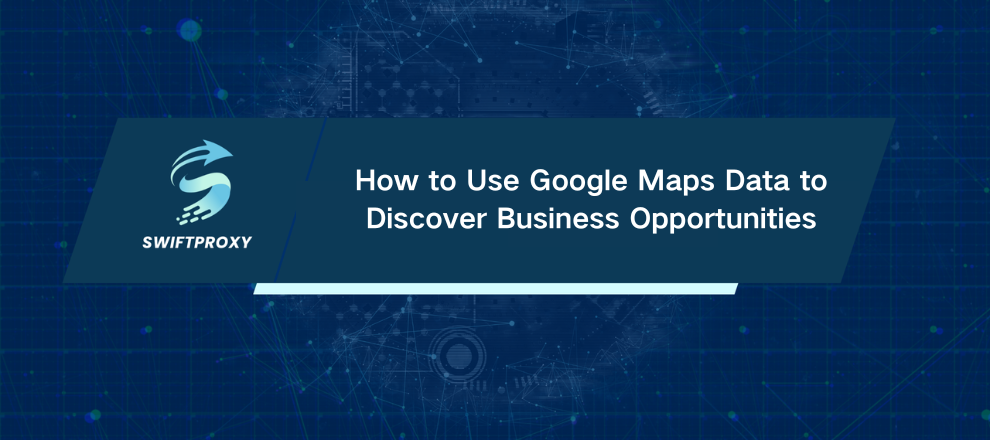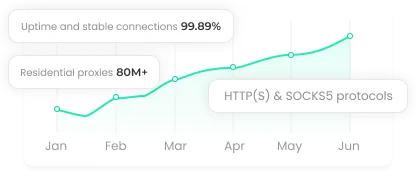How to Use Google Maps Data to Discover Business Opportunities
Google Maps isn’t just a navigation tool; it’s a goldmine of insights waiting to be tapped. From customer reviews to competitor listings, this platform provides actionable data that can guide marketing, strategy, and growth initiatives. The trick? Doing it efficiently and ethically. Scraping Google Maps allows you to extract this data automatically, saving countless hours and enabling large-scale analysis. Let’s dive into how you can do it—safely, strategically, and effectively.

Why Scraping Google Maps Is Important
Google Maps offers a window straight into your market. Scraping its data can reveal patterns, inform decisions, and uncover opportunities that are often hidden. Here's what businesses can gain:
1. Understand Customer Needs
Customer reviews aren't just praise or complaints—they're insights. Scraping reviews can highlight common pain points, strengths, and gaps in the market.
For example, a local café might notice competitors are consistently criticized for slow service. That's a direct signal to streamline your operations and stand out.
2. Track Competitors
Want to know what competitors are doing without sending someone undercover? Scraping Google Maps reveals business hours, services, and customer sentiment.
For example, if a competitor's delivery service is poorly reviewed, you can highlight your faster, more reliable option—turning their weakness into your opportunity.
3. Sharpen Marketing Strategies
Google Maps data isn't just descriptive—it's predictive. By analyzing where your potential customers are and what businesses they interact with, you can craft highly targeted campaigns.
For example, a home improvement brand can identify areas with high concentrations of hardware stores and launch promotions tailored to those neighborhoods.
4. Enhance Local SEO
Local search performance is a competitive game. Scraping data allows you to benchmark your business against competitors. Understand why they rank higher, refine your Google My Business profile, and optimize content for maximum visibility.
Legal and Ethical Considerations
Scraping Google Maps can be powerful—but tread carefully. Google's terms of service are strict, and violating them can lead to blocked accounts or legal action.
Key rules to follow:
Obey Google's rules: Review Google's robots.txt file. It dictates what data is accessible for scraping. Ignoring it is risky.
Use proxies: Services like Swiftproxy protect your identity and rotate IPs to prevent detection.
Control request frequency: Avoid overloading Google's servers—pace your scraping.
Protect privacy: Only scrape publicly available information. Avoid emails, phone numbers, or personal details not meant for public use.
Step-by-Step Guide to Scraping Google Maps
Step 1: Configure Your Environment
Install your scraping tool and subscribe to a proxy service like Swiftproxy. Automated IP rotation keeps your activity undetected.
Step 2: Gather the Data
Focus on extracting:
Business names
Contact information
Customer reviews
Geographic coordinates
Target businesses locally or across specific industries to gather competitive insights.
Step 3: Extract and Save Data
Save data in a structured format—CSV files or a database. Organization is critical for analysis.
Step 4: Analyze Insights
Look for patterns:
Recurring complaints or praises in reviews
Service gaps you can fill
Customer preferences that inform your offerings
Overcoming Common Challenges
IP Restriction: Use rotating proxies to avoid detection.
CAPTCHA: Slow down requests or integrate CAPTCHA-solving services.
Incorrect Data: Always clean, validate, and cross-check your data.
Best Practices
Pace your requests to avoid detection.
Use proxies to stay anonymous.
Clean your data before analysis.
Follow ethical guidelines and respect privacy.
Putting Scraped Data to Work
Competitive Analysis: Identify strengths and weaknesses to craft a competitive strategy.
Personalized Marketing: Use location intelligence to reach the right audience.
Client Insights: Scraped reviews reveal exactly what your customers value.
Conclusion
Google Maps data is more than pins and reviews—it's a map to business growth. With the right tools, like Swiftproxy, and ethical practices, you can extract actionable insights, monitor competitors, and refine marketing strategies. Smart businesses are using data like this to outpace rivals.

















































